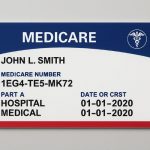Medication safety for seniors is a critical concern for caregivers, particularly when assisting a loved one in managing multiple prescriptions. To help prevent harmful interactions, side effects, and dosing errors, it’s essential to ask the right questions. Pharmacists are a valuable but often underutilized resource for ensuring medications are taken safely and effectively.
In this article, we’ll share nine key questions to ask your pharmacist, empowering you to advocate for your loved one’s health and reduce medication-related risks.

Because seniors often take multiple medications, they’re at higher risk of drug interactions and adverse side effects. Pharmacists are medication experts who can help minimize these risks and keep seniors as healthy as possible. FamilyWize shares nine essential questions to ask at the pharmacy when picking up your older adult’s prescriptions. They also offer three tips for keeping medications organized at home.
Did you know that 8 out of 10 seniors in the United States take at least one medication each day, and many older adults take three or more? That’s a lot of meds!
Physicians commonly prescribe statins, anticholinergics, benzodiazepines, antipsychotics, and proton pump inhibitors.
According to the National Council on Patient Information and Education (NCPIE), this puts people aged 65 years and older at a significantly higher risk for drug interactions, adverse events, and medication errors.
The best way to lower this risk is to ensure that your older adult’s pharmacist has a clear picture of all the medications they take, including over-the-counter medicines.
Next, protect your loved one by ensuring you, as the caregiver, have a clear understanding of how those medications need to be stored and administered.
Although it takes a few extra minutes at the pharmacy counter, speaking with the pharmacist and asking questions is an excellent way for caregivers to keep older adults safe.
Find out about nine essential questions to ask and three tips for keeping medication organized at home.
Medication Safety for Seniors: 9 Questions to Ask the Pharmacist
1. What is the brand name and generic name of this medication?
Does the name on the pill container match what the doctor prescribed? If not, why?
Confirming the drug name and whether the doctor requested the brand name or generic medication helps avoid medication errors.
It also ensures you can request the correct refill when needed.
2. What is this medication for? Does this take the place of anything else that’s currently being taken?
For many older adults, multiple medications may be necessary to manage their health condition or to mitigate the side effects of a required primary treatment.
Understanding what a medication is meant to treat is essential for making sure your older adult is only taking the drugs they currently need.
This helps reduce the chance of negative drug interactions and side effects.
3. Are there any duplicate or unneeded medications?
Some older adults obtain some of their medications from a neighborhood pharmacy, while others receive them from a mail-order pharmacy. Alternatively, they may be consulting more than one doctor or specialist.
In these cases, it’s essential to make sure any pharmacists that you’re able to see in person know all the medications your older adult is currently taking.
Sometimes, seeing more than one doctor results in each doctor prescribing the same kind of therapy, but with a different medication, causing side effects or overmedication.
This is especially problematic with high blood pressure medications and antidepressants.
If a pharmacist is aware of all your older adult’s medications, they can double-check to make sure that’s not happening.
4. How and when should this medication be taken?
All the essential instructions should be displayed on the prescription label.
However, asking the pharmacist helps clarify any details that are even a little confusing and ensures you won’t miss key information.
As a caregiver, this is critical information and gives you confidence when you’re organizing daily doses and planning meals.
VIDEO: Medication Safety for Seniors – What to Ask the Pharmacist
5. What should we do if we miss a dose? What if we accidentally take too much?
This is an essential question for a variety of drugs, where a patient may become ill from skipping a dose or from accidentally taking two doses in one day.
As a caregiver, asking in advance means you’ll know how to respond if an error occurs.
6. When will the medicine start working? Is there anything we should be aware of, such as allergic reactions or side effects?
A pharmacist who is aware of all the medications a patient is taking can identify potential side effects, such as an increased risk of an upset stomach from a specific medication combination.
7. Should the patient avoid any other medicines, dietary supplements, foods, or activities while taking this medication?
This key information should be included on the prescription label, but asking the pharmacist helps highlight the warnings most relevant to your older adult’s situation.
For example, they could be at an increased risk of dizziness or falling.
8. How should this medication be stored?
A warm, humid bathroom is often not the best place to store prescriptions. Asking the pharmacist about storage helps you safely manage medications.
9. How long do these medications need to be taken?
Some medications are intended for short-term use to treat acute conditions, such as antibiotics for an infection or pain relievers for a broken bone or after surgery.
Other medications, like treatments for high blood pressure, diabetes, or high cholesterol, may need to be taken for the rest of a patient’s life.
Ensure you understand how long each specific medication needs to be taken and when it should be reevaluated.

3 Tips for Organizing Medications at Home
Now that you’ve asked the pharmacist these nine essential questions, how do you put that information to work?
Whether your older adult lives with you or elsewhere, medication management is a crucial part of keeping them safe and as healthy as possible.
Here are three tips for organizing medications:
1. Write it down
Take notes on the key facts for each medication as you speak with the pharmacist.
Keep a master list of all medications your older adult takes, including both prescription and over-the-counter medications.
This helps you stay organized, prevent medication errors, and provides a historical log that you can refer back to if needed.
2. Store safely
Each drug has specific storage requirements. You must follow the guidelines as explained by the pharmacist.
Also, consider the safety of any children who may visit the home.
The Centers for Disease Control and Prevention (CDC) has published guidelines on keeping children safe when medications are in the home.
3. Track prescriptions
If you’re managing multiple prescription medications for one or more people, consider taking advantage of an online tool or app to store and track prescription information.
There are free resources available to help reduce the risk of missed doses, medication errors, and missed refills.
Final Thoughts
Ultimately, your peace of mind is the most important prescription. By taking these nine questions to your pharmacist, you become an active, informed partner in healthcare rather than a passive recipient of medication.
This simple conversation is a powerful act of prevention, helping to ensure that every pill taken is a step toward better health, not a potential risk. So, keep this list handy, don’t hesitate to speak up, and remember that there is no such thing as a silly question when it comes to safety. Your proactive approach is the key to managing medications with confidence and clarity.
Recommended for you:
- 8 Tips to Avoid Harmful Drug Reactions and Overmedication in Seniors
- 6 Common Medication Problems in Seniors and 6 Ways to Solve Them
- Prevent Dangerous Drug Interactions in Seniors with a Drug Interaction Checker
Guest contributor: Ken Majkowski, Pharm.D, is the Chief Pharmacy Officer at FamilyWize, an organization that provides a free prescription discount card and mobile Rx app to help people better afford their medications, regardless of insurance coverage. Ken brings more than 40 years of healthcare experience to the FamilyWize team, including 14 years in clinical pharmacy across retail, hospital, and home care settings.












